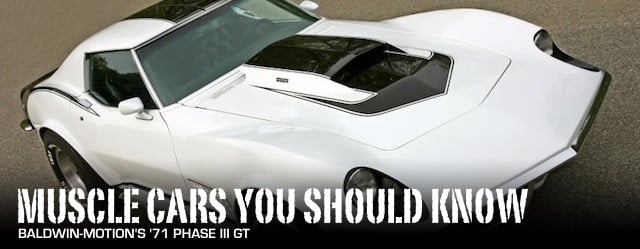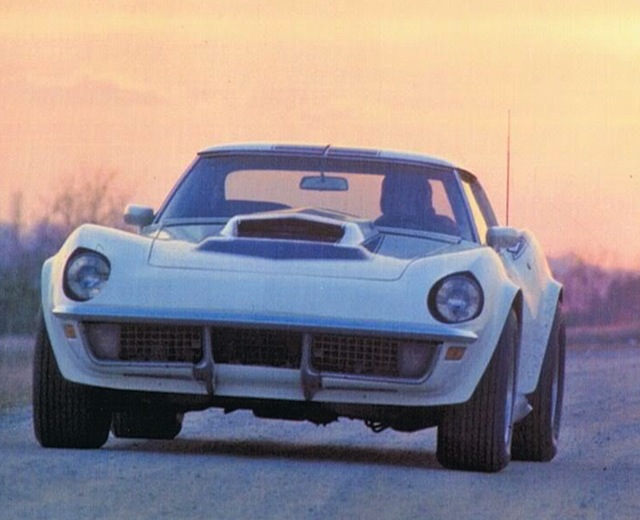Popularity of the redesigned C2 Corvette had been gaining steadily since 1963. The restyled sports car was evolving and building on a successful formula. Changes for 1964 were minor, but the top end, fuel injected 327cui engine gained 15hp. Four wheels disc brakes were introduced with the following year’s model, along with the announcement of a 396cui big block engine for mid-year delivery.
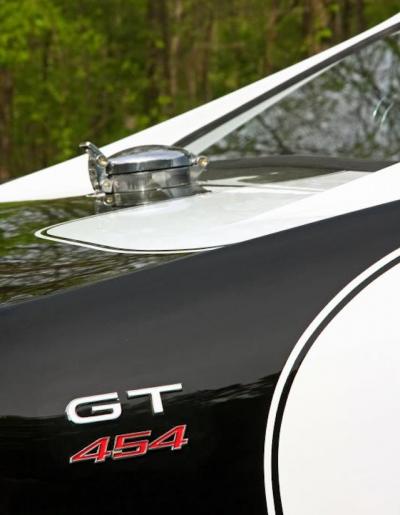 At the 1965 New York Auto Show, GM showed a concept car called the Mako Shark. The Bill Mitchell-driven design had evoked an immediate response within GM Management and a running prototype was authorized.
At the 1965 New York Auto Show, GM showed a concept car called the Mako Shark. The Bill Mitchell-driven design had evoked an immediate response within GM Management and a running prototype was authorized.
That car, dubbed the Mako Shark II was revealed at the Paris Auto Show in October. Presented to gauge public reaction for design features in the 1968 Corvette, the cars stirred a degree of reaction not seen for the Corvette since the 1953 Autorama.
The big block trend continued into 1966 with the introduction of the 427cui V8 engine, in several variants, ranging from the 390hp L36 to the 450hp L72 option. Late introduction of the 396 engine in 1965 led to just 2,157 cars being built with it.
However, it certainly lit the horsepower cravings in the public, who responded mightily in 1966. Of the 27,720 Corvettes sold that year, more than five thousand each of the L36’s and L72’s were delivered. Even the mid-range L79, a 350hp 327cui motor, was sold in over 7500 Corvettes that year. C2 sales peaked that year with a total of 27,720 cars.
Clearly, the American public was horsepower hungry and even the performance from 450hp in a car that had kept to a moderate weight of 3,140 pounds wasn’t enough for some. Around the country, Chevrolet dealers were scrambling to fill the demand and places like Yenko Chevrolet in Canonsburg, PA and Nickey Chevrolet in Chicago, IL, were starting to figure it out.
Further east, a junior partner in a Brooklyn Sunoco station was moving the evolving business further east to Baldwin, NY, on Long Island. Joel Rosen had installed a Clayton chassis dyno and renamed the business to Motion Performance, Inc. before moving the business in 1966. Rosen, working with Marty Schorr (later Editor of VETTE Quarterly magazine) proposed a partnership with nearby Baldwin Chevrolet, run by Ed Simonin and Dave Bean. The first Baldwin-Motion car was sold in 1967.
As Yenko and Nickey were doing, along with Dana Chevrolet in Los Angeles, and Fred Gibb Chevrolet in La Harpe, IL, factory Chevrolets would be sold in high performance versions not available from the factory, but with a factory-like warranty honored by the dealer. Typically, this involved pulling the engine from a lesser Camaro SS model and dropping in a 425hp L72 427cui V8, or the Corvette’s L71 435hp 427 engine.
Rosen’s favored motor was the L88, which could be installed in the so-called “Fantastic Five” – Camaro, Nova, Chevelle, Corvette and Biscayne models. Available from 1967 through 1969, the L88 used high flow aluminum heads on a cast iron block, along with a racing spec camshaft and required at least 103 octane fuel for its 12.5:1 compression setup to deliver 430hp and 460 ft-lb of torque.
This was not a boulevard-friendly setup by any means, but often formed a basis for Baldwin-Motion’s Phase III cars which started at the 500hp level and climbed from there.
For the performance-minded, there was the comfort of Rosen’s guarantee, which stated simply, “We think so much of our Phase III Supercars that we guarantee they will turn at least 120mph in 11.50 seconds or better with an M/P-approved driver on an AHRA or NHRA-sanctioned drag strip.” According to reports, there was never a customer that needed to demand satisfaction using the guarantee. With this approach to business and the availability of a wide range of unique styling options, the Baldwin-Motion operation grew and was considered among the best in the business.
With the passing of the C2 Corvette and its replacement with the Mako Shark-inspired 1968 model, the public’s appreciation of big block performance did not decline. Big block ‘Vette sales grew to 12,627 from 9,707 in 1967. The following year, total number of big-block Corvettes climbed again to 15,343 – representing almost 40 percent of that year’s production.
Writing in the November, 2002 edition of VETTE, Marty Schorr explained, “What most people never realized at the time was that Mr. Motion, the man who turned a simple Camaro engine swap (adding 31cui and 50hp) in 1967 into the stuff that legends are made of, was actually a die-hard Corvette enthusiast.” That enthusiasm boiled over in 1969.
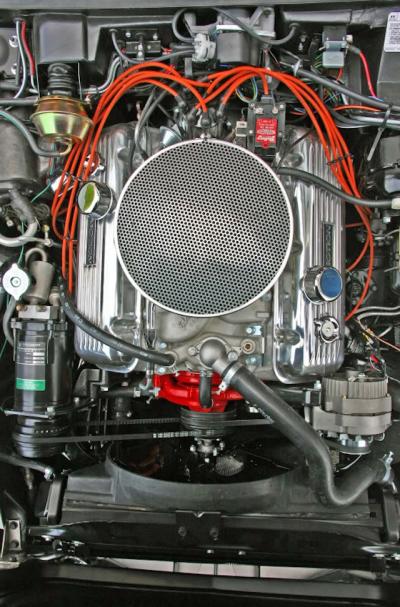 Starting with a leftover 1968 435hp coupe, Rosen installed a 500hp Phase III engine along with headers and the 1969-only optional factory outside exhaust system. A 1050cfm Holley carburetor topped a high rise alloy intake manifold and special Motion valve covers were added. Chassis mods saw new springs, shock absorbers and traction bars installed to handle the power increase.
Starting with a leftover 1968 435hp coupe, Rosen installed a 500hp Phase III engine along with headers and the 1969-only optional factory outside exhaust system. A 1050cfm Holley carburetor topped a high rise alloy intake manifold and special Motion valve covers were added. Chassis mods saw new springs, shock absorbers and traction bars installed to handle the power increase.
Rosen had plans to introduce the Phase II GT at the upcoming New York International Auto Show and knew that he would need more than under hood changes to make a splash. The coupe’s back window was removed and the opening reworked to accept a fastback-type rear glass.
This opened a new area for storage and so, it was finished to match the rest of the car’s interior. The exterior treatment was further extended by adding a functional Phase III hood, functional side vents, flared wheel wells and streamlined outside mirrors. Wide, slotted alloy wheels and Goodyear Polyglas tires improved the stance of the car filled out the flares.
A special, Monza Red paint job was used in conjunction with unique black striping to distinguish the car visually. It was enough to get the car onto the August 1969 cover of CARS magazine. Corvette chief engineer Zora Arkus-Duntov, stopped by the exhibit and encouraged Rosen to build customer cars.
And so, they did, however, the extensive modifications involved resulted in a doubling of the car’s price and there were not many customers that could jump on that deal. It was not, however, for a lack of performance. One of the cars, built with air conditioning and powered by a blueprinted 535hp 454 V8, was documented as achieving 0-to-60 mph in 4.4 seconds with a top speed of over 150 mph prior to delivery.
Only ten custom-built Phase III GT Corvettes were produced between 1969 and 1971. Out of the approximately five hundred Baldwin-Motion cars built between 1967 and 1974, they are among the most prized. Rosen would continue to experiment and build further on the Corvette platform, resulting in a few more unique and highly revered legends being added to the bank of Corvette folklore.
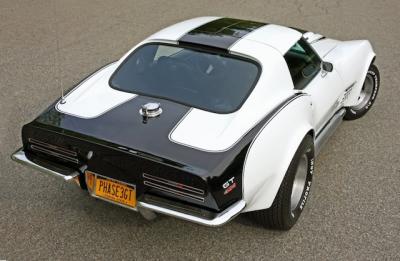 The demise of the operation came after Rosen built a 454-powered Chevrolet Vega in 1974. Publicity over that car attracted the attention of the Environmental Protection Agency and the Departments of Transportation and Justice for violations of Clean Air Act of 1970. Baldwin-Motion’s business of installing non-factory powertrains came to an end. Baldwin Chevrolet also shuttered its doors that same year.
The demise of the operation came after Rosen built a 454-powered Chevrolet Vega in 1974. Publicity over that car attracted the attention of the Environmental Protection Agency and the Departments of Transportation and Justice for violations of Clean Air Act of 1970. Baldwin-Motion’s business of installing non-factory powertrains came to an end. Baldwin Chevrolet also shuttered its doors that same year.
Wrapping up his article in VETTE, Marty Schorr attributed the following passage to Rosen, “When I saw a Corvette for the first time more than four decades ago, it was love at first sight. That love affair is still very much alive. I still miss the freewheeling Baldwin-Motion days and, if the right opportunity came along, I’d jump back into building Corvette supercars cars in a New York minute.”
CHECK OUT OTHER MUSCLE CARS YOU SHOULD KNOW
- ’63 Chevrolet Z11 Impala 427
- ’64 Chrysler Ghia Turbine Car
- ’63 Pontiac Catalina Lightweight 421
- ’69 Mercury Cougar BOSS 429
- ’69 Royal Bobcat Pontiac GTO Ram Air V
- ’87 Buick Regal GNX
- ’69 Ford Mustang BOSS 302 George Follmer’s #16
- ’69 Ford Mustang BOSS 429
- ’69 Dodge Charger Daytona #88
- ’69 Motion Chevrolet Camaro Z/28 427 ZLX
- ’69 Motion Hurst/Oldsmobile 455


